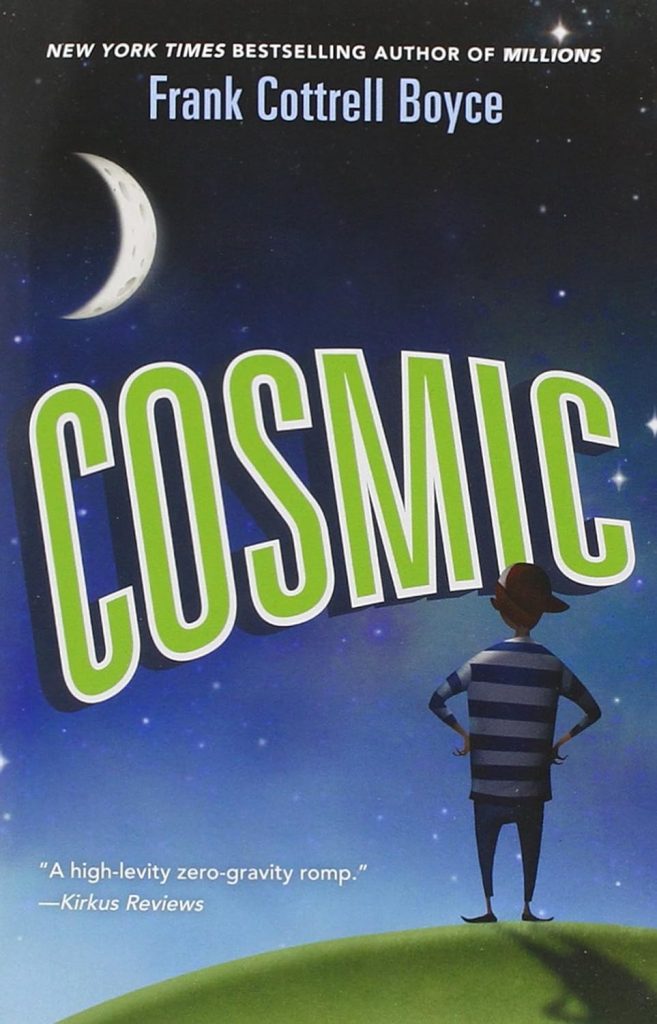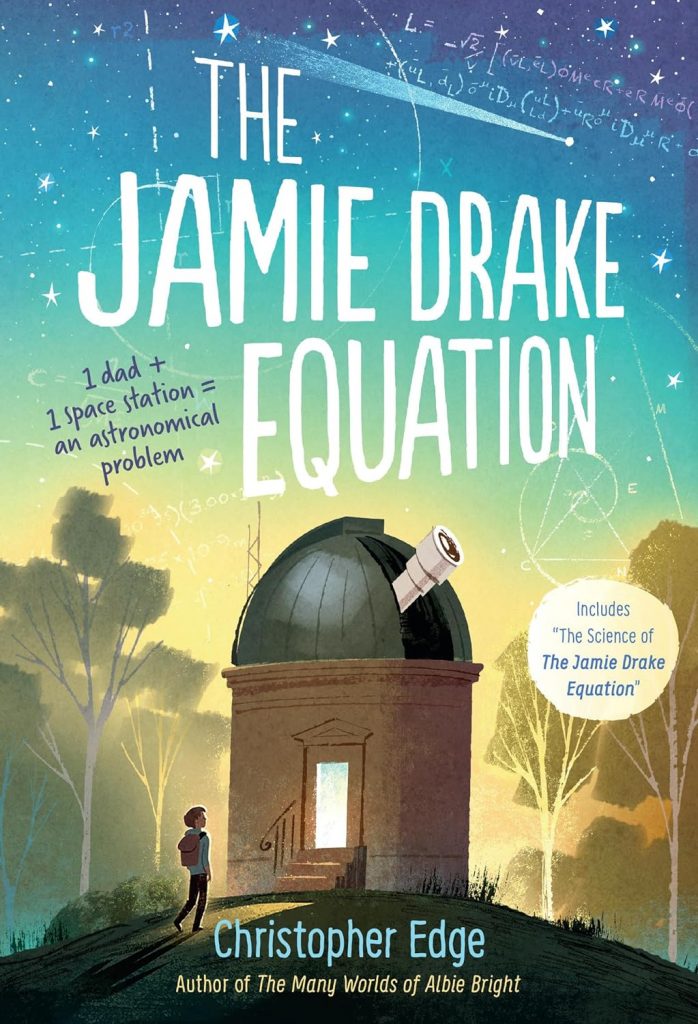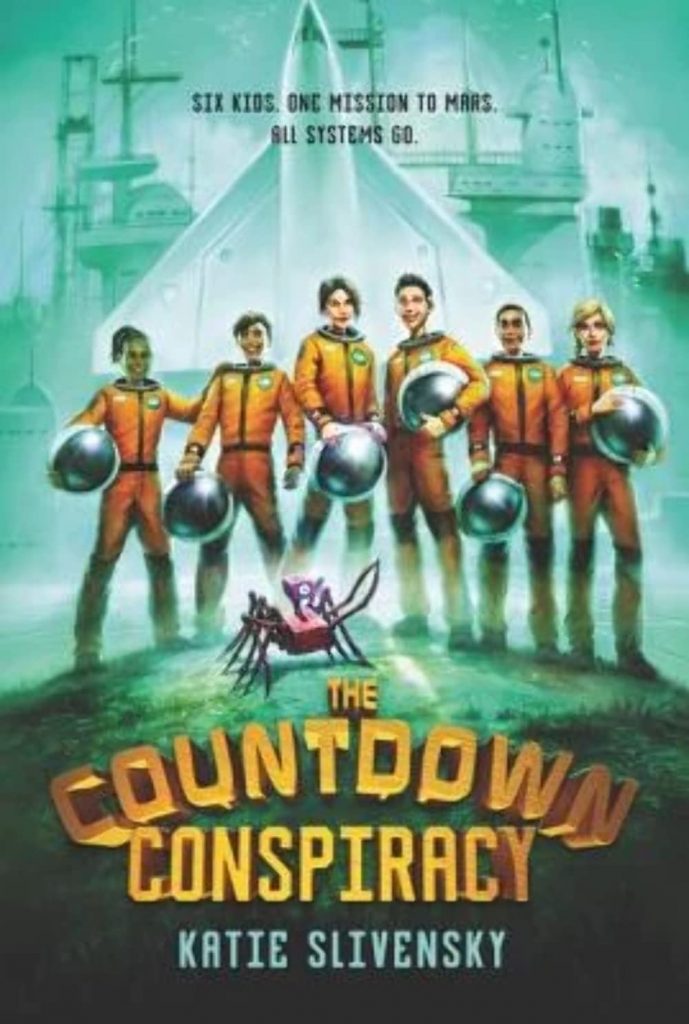or children aged 9-12, reading about space provides a multitude of educational and developmental benefits, aligning with their growing ability to understand complex and abstract concepts. At this age, kids are capable of engaging more deeply with scientific principles and theories, and books about space can significantly enhance their knowledge of physics, astronomy, and engineering. This not only bolsters their academic skills but also stimulates critical thinking and problem-solving as they learn about the challenges of space exploration and the technologies used to overcome them. Additionally, space-themed literature can inspire a sense of adventure and curiosity, motivating children to dream big and consider careers in STEM fields. It also helps in developing their reading and comprehension skills while expanding their vocabulary with technical terms related to space. Furthermore, reading about the vastness of the universe can foster a greater appreciation for Earth and the importance of planetary stewardship, an increasingly relevant topic for future generations.
“George’s Secret Key to the Universe” by Lucy and Stephen Hawking (First Published 2007)

This book combines a fictional adventure story with scientific facts and theories about space, making it an engaging read for young readers. The story follows George, a young boy who discovers a computer that serves as a portal to the universe, leading him on thrilling adventures through space.
The book covers various astronomical concepts, including black holes, the solar system, and the big bang theory. Through George’s adventures, readers learn about these topics in a context that is both entertaining and educational. The narrative is interspersed with real scientific information and explanations, supported by full-color photographs of outer space, which are provided by NASA.
“George’s Secret Key to the Universe” enriches a child’s mind by blending learning with storytelling. It encourages curiosity about science and the universe, teaching complex ideas in a way that is accessible to children. This approach not only helps to demystify space science but also promotes a love of learning by showing that science can be fun and adventurous.
Additionally, the book includes contributions from Stephen Hawking, one of the most renowned physicists in history, which adds authenticity and depth to the scientific discussions. The inclusion of environmental themes also encourages young readers to think about how science and technology can be used to address real-world problems.
“Space Case” by Stuart Gibbs (First Published 2014)

This book is a part of the “Moon Base Alpha” series, and it takes place on a fictional lunar base in the year 2041. The story revolves around a young boy named Dash Gibson who lives on the moon with his family. When a top scientist at the base dies under mysterious circumstances, Dash suspects foul play and takes it upon himself to solve the mystery.
“Space Case” is thoroughly about space in the sense that it explores life on a lunar base, providing insights into what living on the moon might involve, from the technological aspects to the social dynamics of a small, isolated community of space travelers. The book combines elements of science fiction with a classic whodunit mystery, making it both exciting and educational.
The book enriches a child’s mind by stimulating their imagination about space travel and lunar habitation. It also introduces them to scientific concepts and the potential future of space exploration in an accessible and engaging manner. The mystery element of the story helps develop critical thinking and problem-solving skills, as readers can piece together clues alongside the protagonist.
Additionally, “Space Case” is noted for its humor and well-developed characters, which add depth to the narrative and make it more enjoyable for young readers. The blend of adventure, science, and mystery makes this book particularly appealing to middle-grade readers who are interested in space and science fiction.
“Cosmic” by Frank Cottrell Boyce (First Published 2008)

This story revolves around Liam, a 12-year-old boy who is often mistaken for an adult due to his height and some facial hair. Liam’s unique appearance leads him on an unexpected adventure when he ends up being mistaken for a father and wins a trip to a brand new theme park in China. The adventure escalates when he finds himself competing to be the first child to go into space, leveraging his mistaken identity as an adult.
The book is about space in that it eventually takes Liam and a group of children into space, exploring themes of leadership, responsibility, and the awe-inspiring experience of seeing Earth from afar. Boyce uses the setting of space to magnify the challenges Liam faces, both in terms of physical danger and ethical dilemmas.
“Cosmic” is really good at blending humor with profound life lessons. The story encourages young readers to think about what it means to be grown up, the responsibilities it entails, and the importance of family and friendship. The novel also prompts discussions about honesty, the consequences of deceit, and the value of courage and perseverance in facing unintended consequences.
Additionally, the book is notable for its engaging narrative voice and the relatable way it deals with complex emotions and situations. The mix of realistic and fantastical elements helps maintain a high level of engagement, making it a favorite among children who are looking for both entertainment and a bit of a challenge in their reading. “Cosmic” is celebrated for its creativity and the thoughtful way it handles its young protagonist’s journey into both outer space and personal growth.
“Hidden Figures Young Readers’ Edition” by Margot Lee Shetterly (First Published 2016)

This edition is tailored specifically for a younger audience, making the incredible story of four African American women mathematicians at NASA more accessible to children. These women, Katherine Johnson, Dorothy Vaughan, Mary Jackson, and Christine Darden, played pivotal roles in some of NASA’s biggest achievements, including the orbit of John Glenn and the moon landings.
The book is about space through the lens of the contributions these women made to the space race. It discusses the mathematical and engineering challenges involved in space travel and how these brilliant mathematicians overcame both technical difficulties and the social barriers of racism and sexism during the 1950s and 1960s.
“Hidden Figures Young Readers’ Edition” enriches a child’s mind by presenting inspiring real-life stories of overcoming adversity and achieving great things against the odds. It educates young readers about important historical events and social issues, while also sparking an interest in science, technology, engineering, and mathematics (STEM). The book is an excellent resource for teaching about perseverance, courage, and the importance of equality.
“The Jamie Drake Equation” by Christopher Edge (First Published 2017)

The novel centers on Jamie Drake, whose father is an astronaut currently on a mission to discover alien life. The story combines family drama with cosmic adventure as Jamie deals with the challenges of having a father in space and the personal turmoil that brings, while also stumbling across a strange app on his phone that seems to be receiving messages from aliens.
The book is about space in that it integrates the vastness and mystery of the universe into the personal story of a young boy. Jamie’s fascination with the stars and his father’s space mission bring elements of astronomy, physics, and the potential for extraterrestrial life into the narrative, making these topics relatable and engaging for young readers.
“The Jamie Drake Equation” enriches a child’s mind by blending real science with fiction, sparking curiosity about the universe and what lies beyond our planet. It also explores themes of family, resilience, and the wonder of discovery. Through Jamie’s eyes, readers learn about the sacrifices made by families of astronauts, as well as the excitement and risks involved in space exploration.
Additionally, the novel is praised for its heartwarming narrative and its ability to make complex scientific concepts accessible and intriguing to children. The mix of adventure, science, and emotional depth makes it a compelling read for young readers, encouraging them to think about the broader universe and their place within it. The story is not only a journey through space but also a journey of personal growth and understanding.
“The Countdown Conspiracy” by Katie Slivensky (First Published 2017)

This science fiction novel is an exciting adventure that follows Miranda Regent, a young astronaut-in-training, selected to be part of an international mission to Mars. The story is set in a near-future world where six teens from around the globe are chosen for this prestigious task. However, as they prepare for their mission, they face sabotage and someone seems determined to stop them from reaching Mars.
The book is deeply embedded in the theme of space exploration, delving into the training, teamwork, and technological advancements necessary for a mission to Mars. It gives a glimpse into the possible future of human space travel and the complexities involved in interplanetary missions.
“The Countdown Conspiracy” enriches a child’s mind by weaving in elements of science, technology, and international cooperation. It encourages readers to think about the future, the role of science in society, and the importance of working together towards common goals. The story also promotes problem-solving and critical thinking, as Miranda and her team must figure out who is sabotaging their mission and why.
Additionally, the novel touches on themes of trust, friendship, and perseverance, providing young readers with a narrative that is not only thrilling but also motivational. It makes them wonder about the possibilities of space travel and their own potential roles in future scientific endeavors. The inclusivity of characters from diverse backgrounds and the emphasis on collaboration are particularly noteworthy, reflecting a global approach to solving big challenges.
“Astrotwins — Project Blastoff” by Mark Kelly (First Published 2015)

Written by astronaut Mark Kelly, the book is a fictional story based on his own childhood experiences. It follows the adventures of twin brothers Mark and Scott Kelly, who decide to build a homemade spacecraft in their backyard during the summer.
The story is about space in that it reflects the twin brothers’ passion for space exploration and their dream of flying to the stars. Their ambitious project to build a spacecraft serves as a catalyst for a series of learning experiences involving physics, engineering, and teamwork. The book incorporates realistic aspects of space travel and scientific inquiry, making the dream of reaching space feel achievable and exciting.
“Astrotwins — Project Blastoff” enriches a child’s mind by sparking imagination and curiosity about science and space. It encourages young readers to think creatively and solve problems, just like the twins do when facing technical challenges in their spacecraft construction. The story promotes important values such as perseverance, collaboration, and the pursuit of knowledge.
Additionally, the fact that the author, Mark Kelly, is an astronaut adds an authentic touch to the narrative, providing insights into the mindset and experiences that might lead one to pursue a career in space exploration. The book is educational yet entertaining, making it a great tool to engage children in science and inspire them to dream big, just like the Kelly twins. The combination of adventure, family dynamics, and science education makes this book a compelling read for young space enthusiasts.
“See You in the Cosmos” by Jack Cheng (First Published 2017)

The story is centered around an 11-year-old boy named Alex Petroski who loves space and rockets. His dream is to launch his own rocket into space, carrying his golden iPod with recordings about life on Earth for potential extraterrestrial listeners, inspired by the Golden Record launched aboard the Voyager spacecraft.
The book is about space not only through Alex’s passion for astronomy and his quest to launch a rocket but also in how it explores themes of discovery, connection, and the vastness of the universe compared to individual human experiences. Through Alex’s journey, which takes him far from home and introduces him to an array of complex characters, readers explore big questions about existence and our place in the universe.
“See You in the Cosmos” enriches a child’s mind by encouraging curiosity and resilience. Alex’s innocent and earnest narrative voice captivates readers, allowing them to see the world through his wondering eyes. The novel deals with complex family dynamics and personal discovery, making it relatable and thought-provoking for younger readers.
Additionally, the book’s format is unique, as it is structured around the recordings Alex makes on his iPod. This narrative style gives a deeply personal and immediate feel to the story, enhancing its impact and accessibility. The novel effectively mixes light-hearted, adventurous elements with more serious themes, providing a balanced and engaging reading experience that can inspire children to think more deeply about their own dreams and the bigger picture of their role in the world.
Leave a Reply